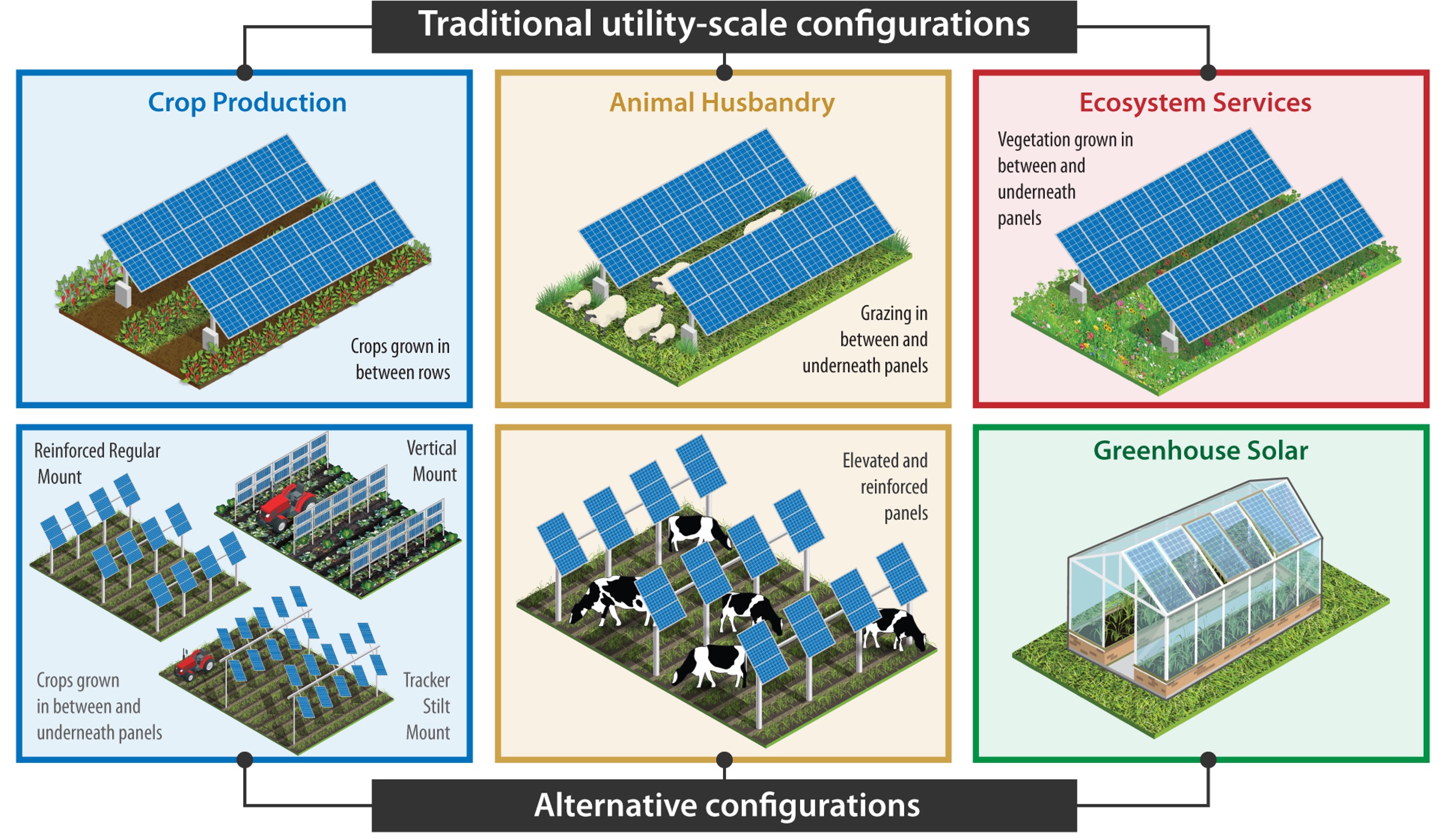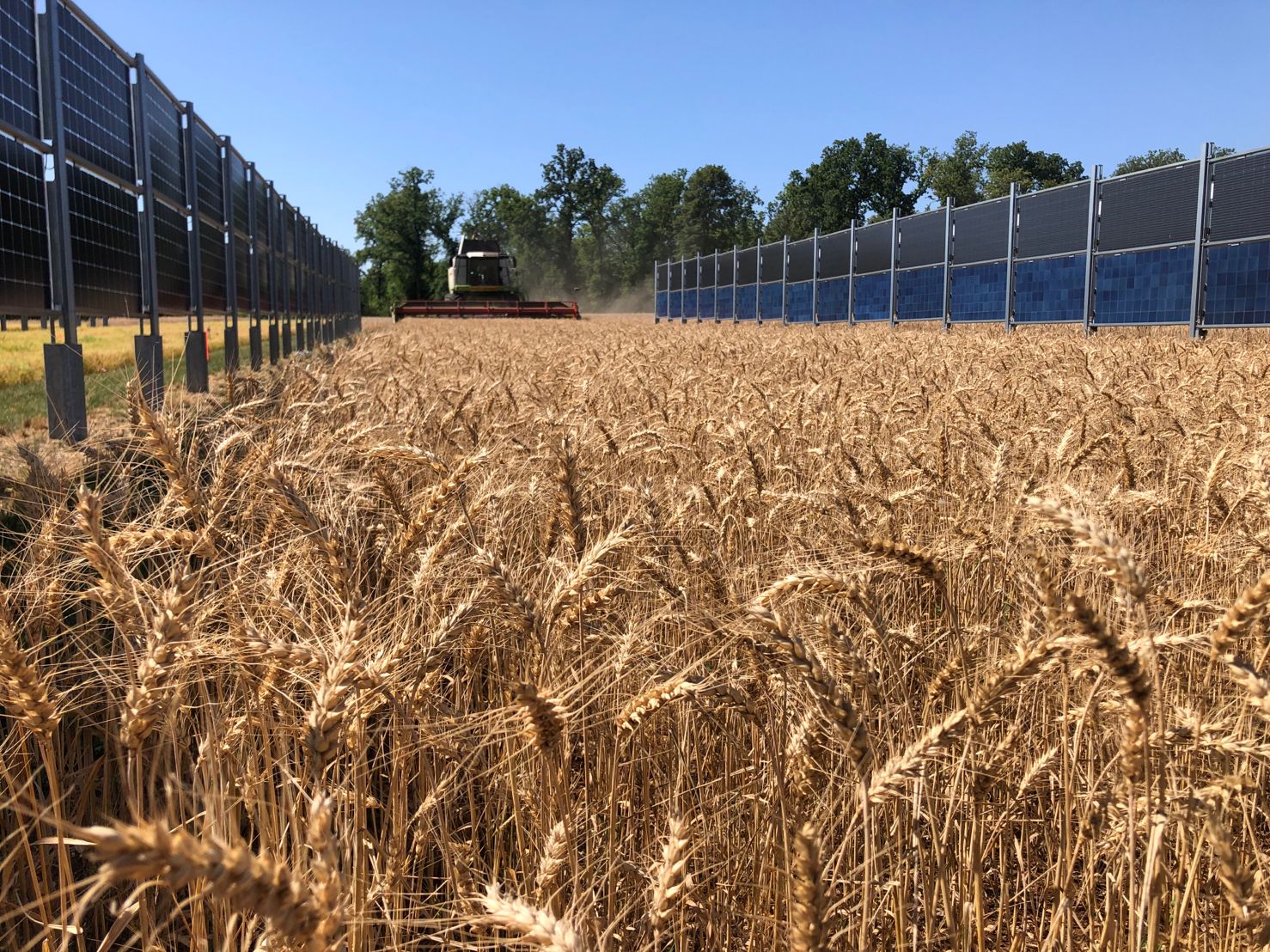Agrivoltaic opportunities: Grow crops in solar energy systems
Michigan farmers grow crops well suited for solar projects.

What would you think if vegetables, wheat and small fruit could be grown in a solar project in your township? This scenario could happen in Michigan if we think about agriculture and solar photovoltaic technologies on the same land in novel configurations (Figure 1). Thinking this way requires a paradigm shift in the way we think about agriculture and solar energy systems. This system looks at agriculture and solar power production as compliments to the other instead of as competitors. Ag and solar is not a zero-sum proposition.

A frequently cited argument against solar projects is they take land out of agricultural production. This is a false narrative. The reality is that crops can be grown underneath and in proximity to solar panels. Examples of these crops are listed below. Note that this is not an exhaustive list.
Row Crops
Oats, potatoes, winter wheat

Forage Crops
Alfalfa, brown midrib sorghum-sudan grass, red clover, white clover, field peas, meadow fescue, Orchard grass
Herbs
Basil, cilantro, mint, parsley, saffron, thyme
Vegetable Crops
Arugula, asparagus, beets, Bok choy, broccoli, cabbage, carrots, cauliflower, celery, celeriac, chard, coriander, collards, Fava beans, garlic, kale, kohlrabi, lettuce, onions, parsnips, peas, peppers, radish, spinach, Swiss chard, tomatoes, turnips
Small Fruit Crops
Blueberries, strawberries
Cane Fruit Crops
Blackberries, raspberries
Vine Fruit Crops
Grapes, cantaloupe
Tree Fruit Crops
Apples, nectarines, peaches
Mushrooms
Mushrooms
Michigan farmers grow all these crops (except for saffron), which provides many cropping system options to consider in utility and community solar energy systems. That said, the proximity of the solar array to the crop matters. Agreeing on what that configuration looks like is why the farmer and the solar developer must plan together early in the solar project planning process. This planning process is part of a more holistic and integrated approach centered at the intersection of food, energy and water systems. This type of nexus thinking emphasizes links among water, energy and food resource systems.
If you have questions about the type of crops that can be grown in solar energy system, please contact Charles Gould, Michigan State University Extension Bioenergy Educator, at 616-834-2812 or gouldm@msu.edu. The MSU Extension Agricultural Bioenergy and Energy Conservation website has additional information on renewable energy.



 Print
Print Email
Email




